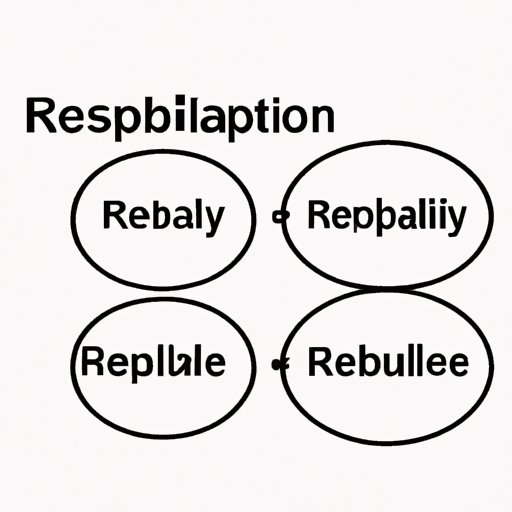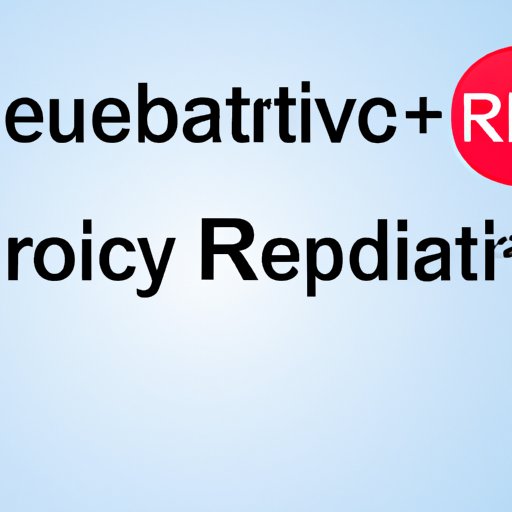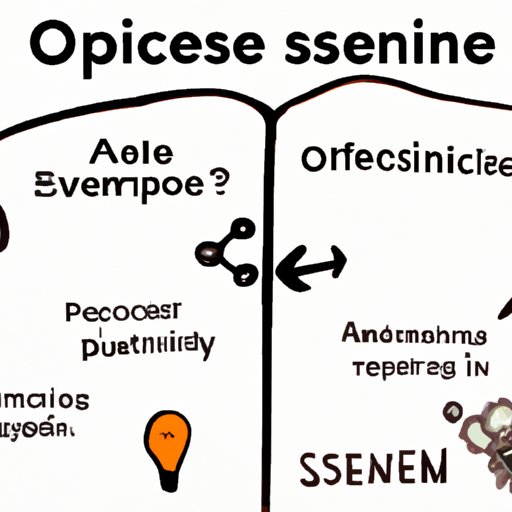Introduction
The concept of reproducibility in science has become increasingly important in recent years as researchers strive to create reliable and trustworthy results. But what exactly is reproducibility in science? And why is it so important? In this article, we’ll explore these questions and more as we take a closer look at how to achieve quality results through reproducible research practices.
What is Reproducibility in Science?
Reproducibility is the ability for a scientific experiment to be repeated with the same results. According to an article published by the American Association for the Advancement of Science (AAAS), “reproducibility is the cornerstone of the scientific process.”
In other words, if an experiment cannot be reproduced, then its results cannot be trusted. Reproducibility ensures that the findings of an experiment are accurate, consistent, and reliable.
Why is Reproducibility in Science Important?
Reproducibility is essential for the advancement of scientific knowledge. Without it, scientists would be unable to build on existing research or test potentially revolutionary hypotheses. As the AAAS article points out, “Reproducibility is the gold standard of scientific rigor, and without it, the scientific enterprise fails to progress.”
A Guide to Reproducible Research Practices
So how can researchers ensure their experiments are reproducible? Here are some tips for achieving reproducibility in science:
Documenting Research Processes
The first step in making research reproducible is to document the research process. This means keeping detailed records of every step taken during the experiment, from the initial hypothesis to the final results. By recording all the variables, materials, and methods used, researchers will have a clear picture of what was done and can easily repeat the experiment if needed.
Quality Assurance and Data Management
Good data management is essential for reproducible research. All data should be stored securely and backed up regularly. Additionally, researchers should use quality assurance protocols to ensure accuracy and consistency. This includes double-checking calculations and validating results against previous studies.
Re-running Experiments
To ensure reproducibility, researchers should re-run experiments several times and compare the results. If the results differ significantly, then further investigation may be necessary to determine the cause of the discrepancy. This is a good way to identify potential errors or sources of bias.
Replication Studies
Replication studies are another important tool for ensuring reproducibility in science. A replication study involves repeating an experiment using different materials, methods, or conditions. This is a good way to confirm the results of an experiment and double-check for any discrepancies.
Benefits & Challenges of Reproducibility in Science
Reproducibility in science has many benefits, including increased trustworthiness of results and better collaboration between researchers. However, there are also some challenges associated with reproducible research, such as the cost and time needed to replicate experiments.
Benefits
One of the main benefits of reproducible research is that it increases the trustworthiness of results. According to a study published in Nature, “Reproducible work can help to reduce the noise of irreproducible results in the literature and allow us to move closer to the truth.”
Additionally, reproducible research encourages collaboration between researchers, as it allows them to share data and verify the results of each other’s experiments. This helps to speed up the process of scientific discovery.
Challenges
One of the biggest challenges of reproducible research is the cost and time involved in replicating experiments. According to a study published in PLoS Biology, “Reproducing experiments…can be costly and time consuming, and is not always possible due to resource constraints.”
Another challenge is that the results of reproducible research may not always match the original results. This discrepancy can be due to a number of factors, such as changes in the environment or different experimental conditions.

Replication vs. Reproducibility vs. Reliability
It’s important to understand the difference between replication, reproducibility, and reliability. Replication is the process of repeating an experiment to confirm the results. Reproducibility is the ability to reproduce the results of an experiment. And reliability is the degree to which an experiment produces consistent results.

Achieving Quality Results Through Reproducibility
In order to achieve quality results through reproducible research, it’s important to create a quality control checklist. This should include steps for documenting processes, verifying results, and ensuring data accuracy. Additionally, researchers should automate as many processes as possible to reduce the risk of human error.

Making Sense of Open Science
Open science is an approach to research that leverages open source tools and technology to make research more transparent and accessible. Examples of open source tools include software for data analysis, version control, and project management. These tools can help researchers ensure reproducibility in their experiments by providing an easy way to track changes, manage data, and collaborate with others.
Open science also has the benefit of allowing researchers to access data and resources quickly and easily. This makes it easier to replicate experiments and verify results.
Conclusion
Reproducibility in science is essential for creating reliable and trustworthy results. By following best practices for reproducible research, such as documenting processes, using quality assurance protocols, and leveraging open source tools, researchers can ensure their experiments are reproducible and their results are accurate.
In summary, reproducibility is the cornerstone of quality research, and understanding the differences between replication, reproducibility, and reliability is essential for achieving reliable results. With the right tools and techniques, scientists can ensure their research is reproducible and trustworthy.
Summary of Key Points
• Reproducibility is the ability for a scientific experiment to be repeated with the same results.
• Reproducibility is essential for the advancement of scientific knowledge.
• To ensure reproducibility, researchers should document processes, use quality assurance protocols, and re-run experiments.
• Leveraging open source tools and technologies can help to make research more transparent and accessible.
• Understanding the differences between replication, reproducibility, and reliability is essential for achieving reliable results.
Recommendations for Further Reading
• The American Association for the Advancement of Science: Reproducibility in Science: A Primer
• Nature: Why reproducibility matters
• PLoS Biology: The Reproducibility Crisis: What Is It and What Can Be Done?
Conclusion
In conclusion, reproducibility in science is essential for creating reliable and trustworthy results. By following best practices for reproducible research, such as documenting processes, using quality assurance protocols, and leveraging open source tools, researchers can ensure their experiments are reproducible and their results are accurate. Understanding the differences between replication, reproducibility, and reliability is also essential for achieving reliable results.
(Note: Is this article not meeting your expectations? Do you have knowledge or insights to share? Unlock new opportunities and expand your reach by joining our authors team. Click Registration to join us and share your expertise with our readers.)
